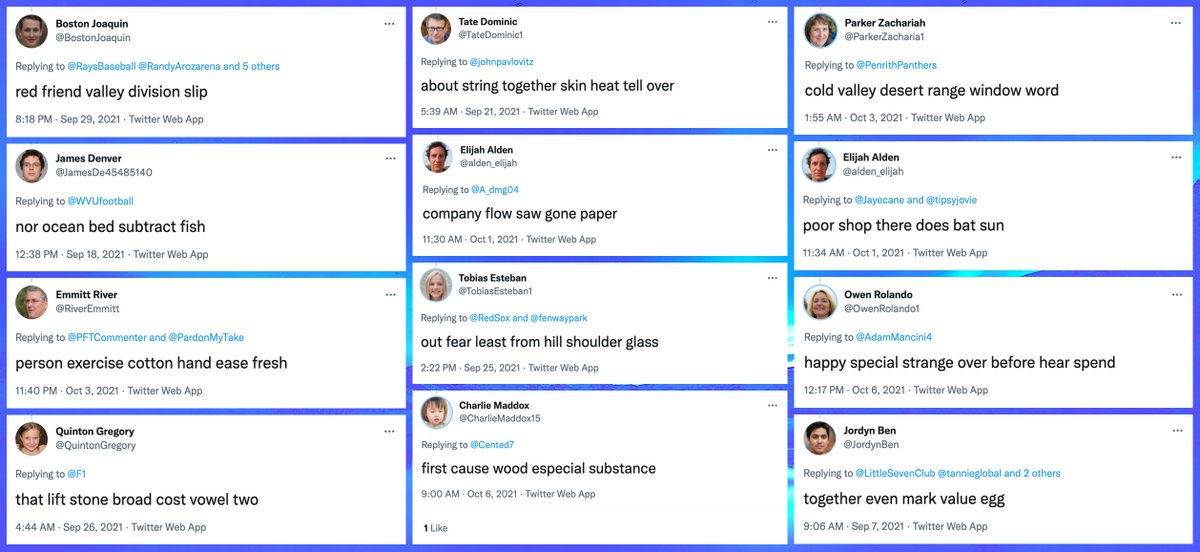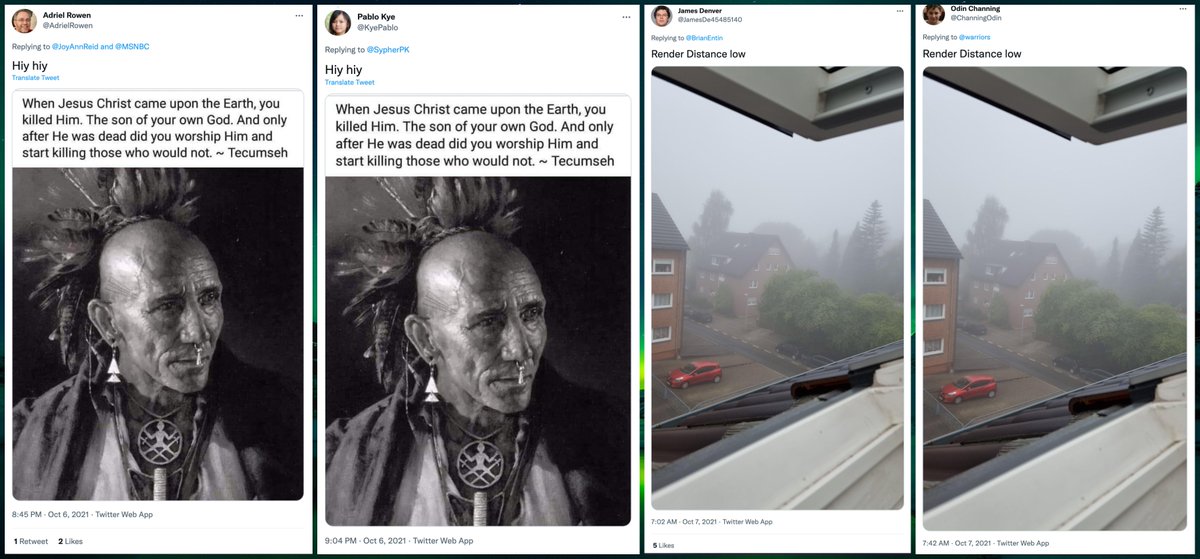The bots described in this previous thread have been banned, but a new batch of accounts with GAN-generated face pics and screenshots of fake Elon Musk tweets has arisen to replace them.
#ThisPersonDoesNotExistAndNeitherDoesThisElonMuskTweet
cc: @ZellaQuixote
#ThisPersonDoesNotExistAndNeitherDoesThisElonMuskTweet
cc: @ZellaQuixote
https://twitter.com/conspirator0/status/1413274111653158914

The new incarnation of the network consists of (at least) 128 accounts created between August 18th and October 10th 2020. All tweet exclusively via the Twitter Web App (allegedly), and all their tweets to date are either replies or retweets. 







The network's replies fall into three categories:
• replies containing screenshots fake Elon Musk tweets advertising watches and random text
• replies consisting entirely of random text
• repetitive replies containing images


• replies containing screenshots fake Elon Musk tweets advertising watches and random text
• replies consisting entirely of random text
• repetitive replies containing images



The screenshots of fake Elon Musk tweets hawking watches are associated with an ongoing scam involving shady websites that supposdely sell the watches in question. More details in this thread from @EJGibney:
https://twitter.com/EJGibney/status/1414613263879389187
Who does this network retweet and reply to? Mostly large verified sports and news accounts, with a few exceptions. The same is true of the accounts the bots in the network follow as well (although there's a bit more variety). 



All 128 accounts in this network use GAN-generated face pics, similar to those generated by thispersondoesnotexist.com.
(GAN = "generative adversarial network", the AI technique used to generate the images)
(GAN = "generative adversarial network", the AI technique used to generate the images)

The current generation of GAN-generated face pics always have the major facial features (particularly the eyes) at the same pixel position in the image. This becomes apparent when one blends the profile images used by the botnet.
With only 128 accounts, you'd think the operators of this network would've actually looked at the AI-generated face pics they used, but some really glitchy ones nonetheless made their way into the batch. 

More information on GAN-generated images (mostly fake faces) and their use on social media (mostly Twitter) in this thread of threads:
https://twitter.com/conspirator0/status/1322704400226394112
As with the previous incarnation of this botnet, these accounts are periodically deleting their media tweets (most of which are replies with the fake Elon Musk tweet screenshots).
• • •
Missing some Tweet in this thread? You can try to
force a refresh































